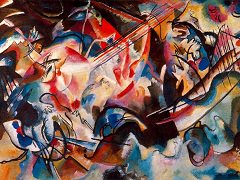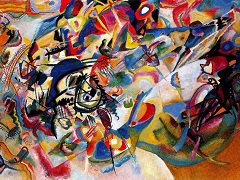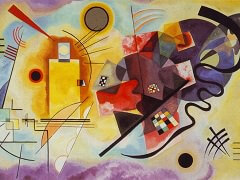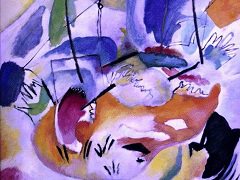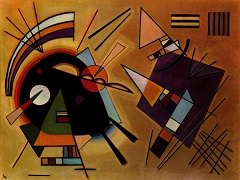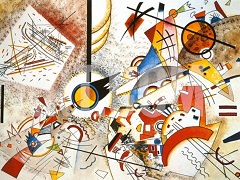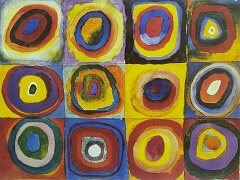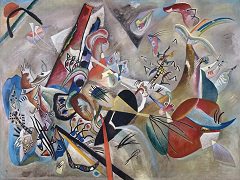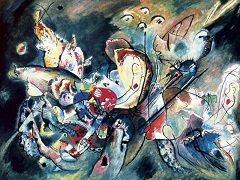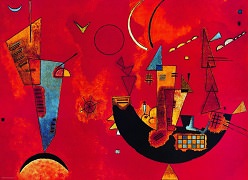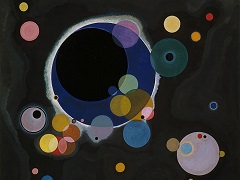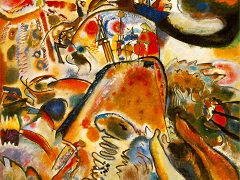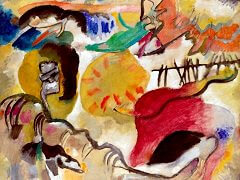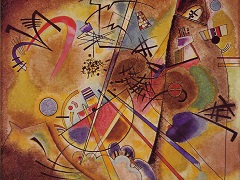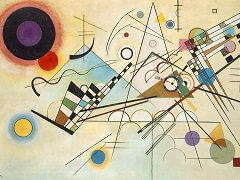Blue Rider, 1909 by Wassily Kandinsky
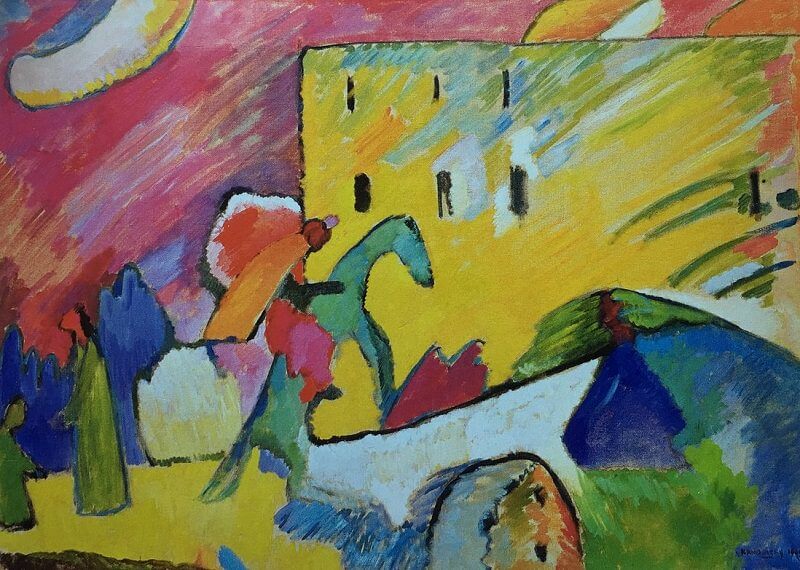
The New Society of Munich Artists proved to be fertile ground for the dissemination of new ideas at a time when Kandinsky was seeking a new language in his art as he moved inexorably towards Abstraction, The society staged a number of exhibitions. In the second such exhibition in 1910, Kandinsky brought a large number of works in from Holland and France by Fauve artists such as Matisse, the Cubist artists Pablo Picasso (1881-1973) and Georges Braque (1882-1963), representing a truly international array to a Munich that needed revitalizing.
Also at this time, Kandinsky began discussing co-operative qesamtkunstwerk ideas for the stage with the Munich Artists' Theatre, One of the most interesting ideas for Kandinsky's own development as an artist was the discovery of verre eglomise (gilded glass) work known in Bavaria as hinterqlasmalerei. These glass paintings were developed during the medieval period, but the technique had been used in the nineteenth century, particularly in Bavaria, for decorative panels. What attracted Kandinsky was the simplified forms, often patchwork in style with an abstract quality, Gabriele Munter visited Heinrich Rambold (1872-1955) in Murnau to learn the technique, and taught it to Kandinsky. The style of these traditional folk-art paintings is replicated in this work, albeit as oil on canvas.

